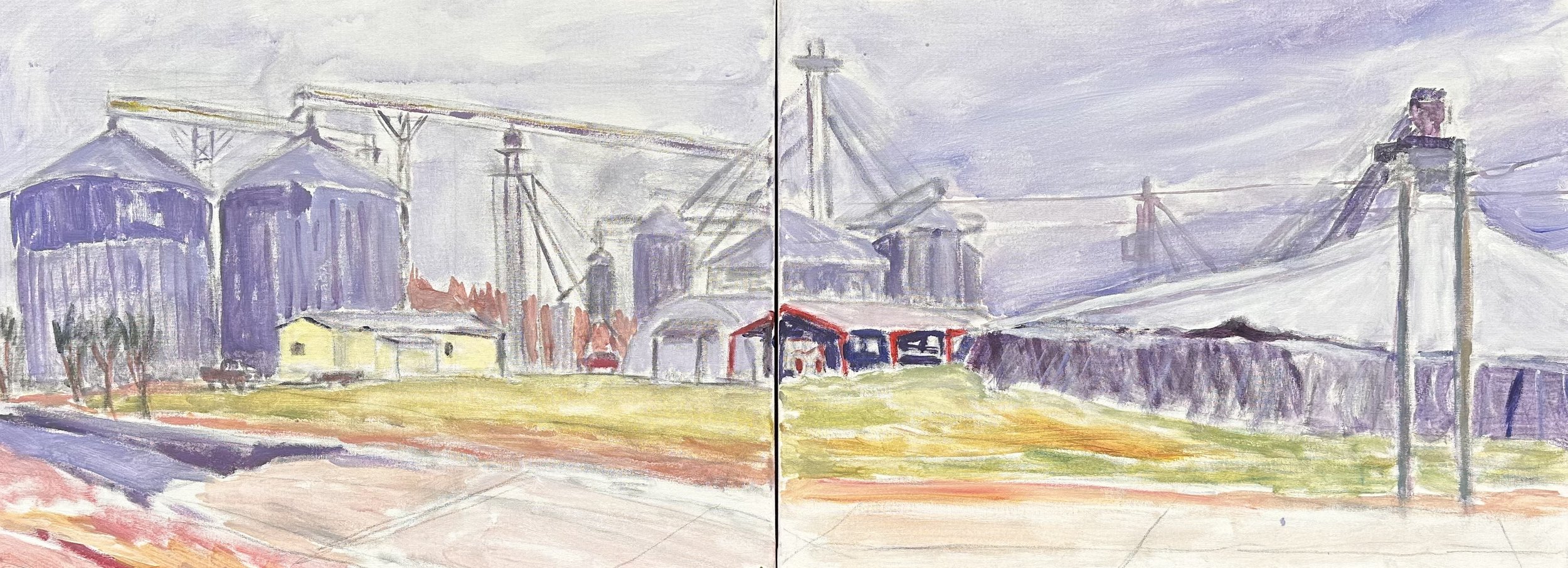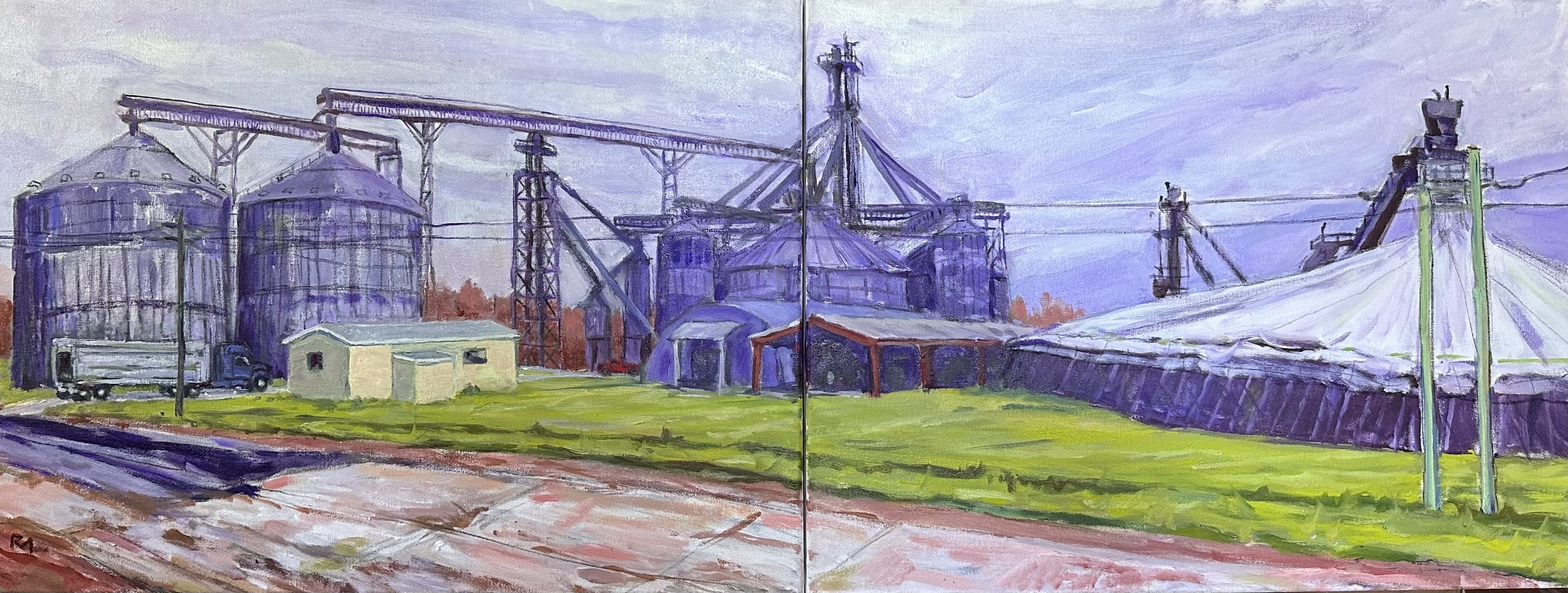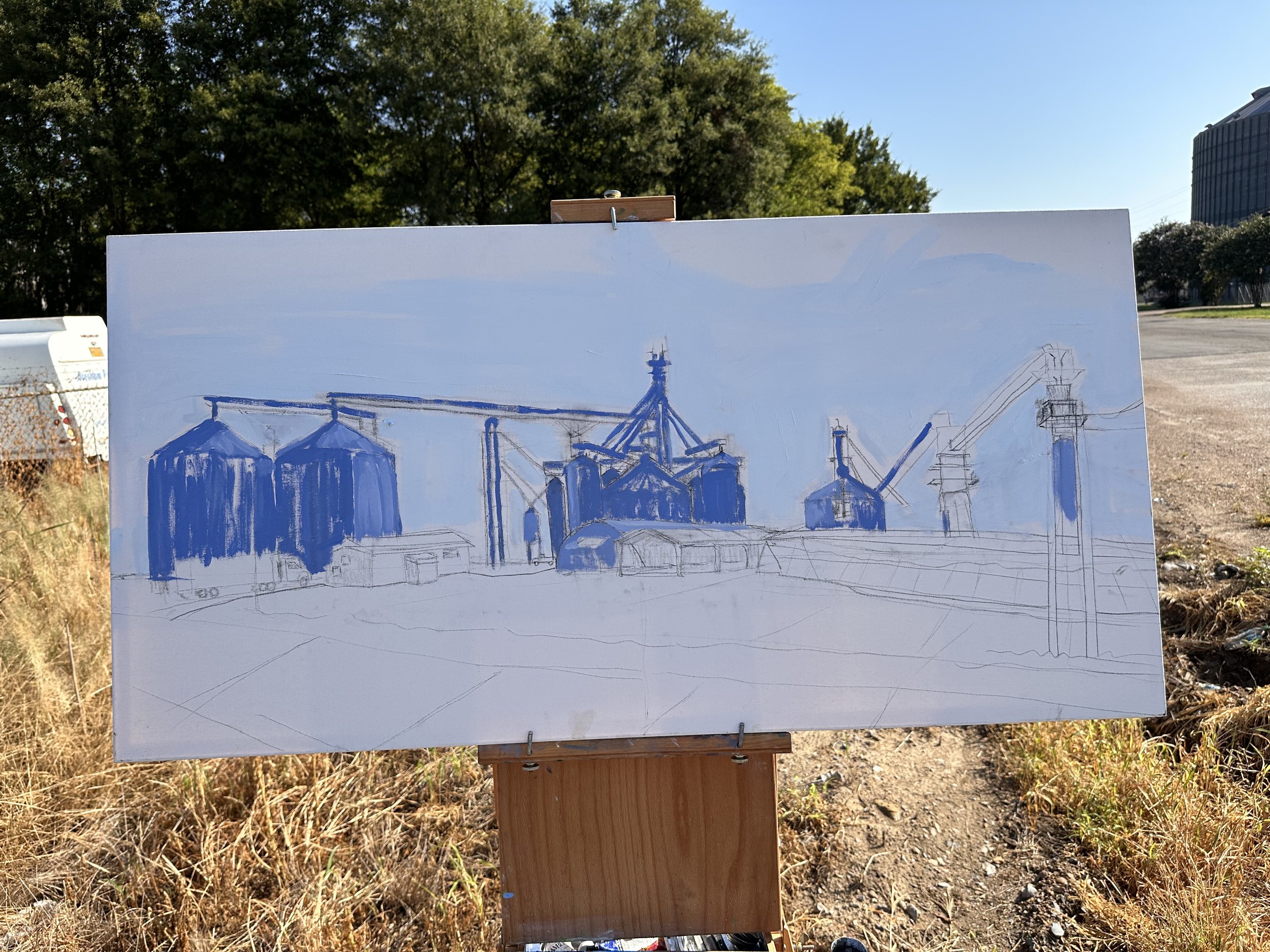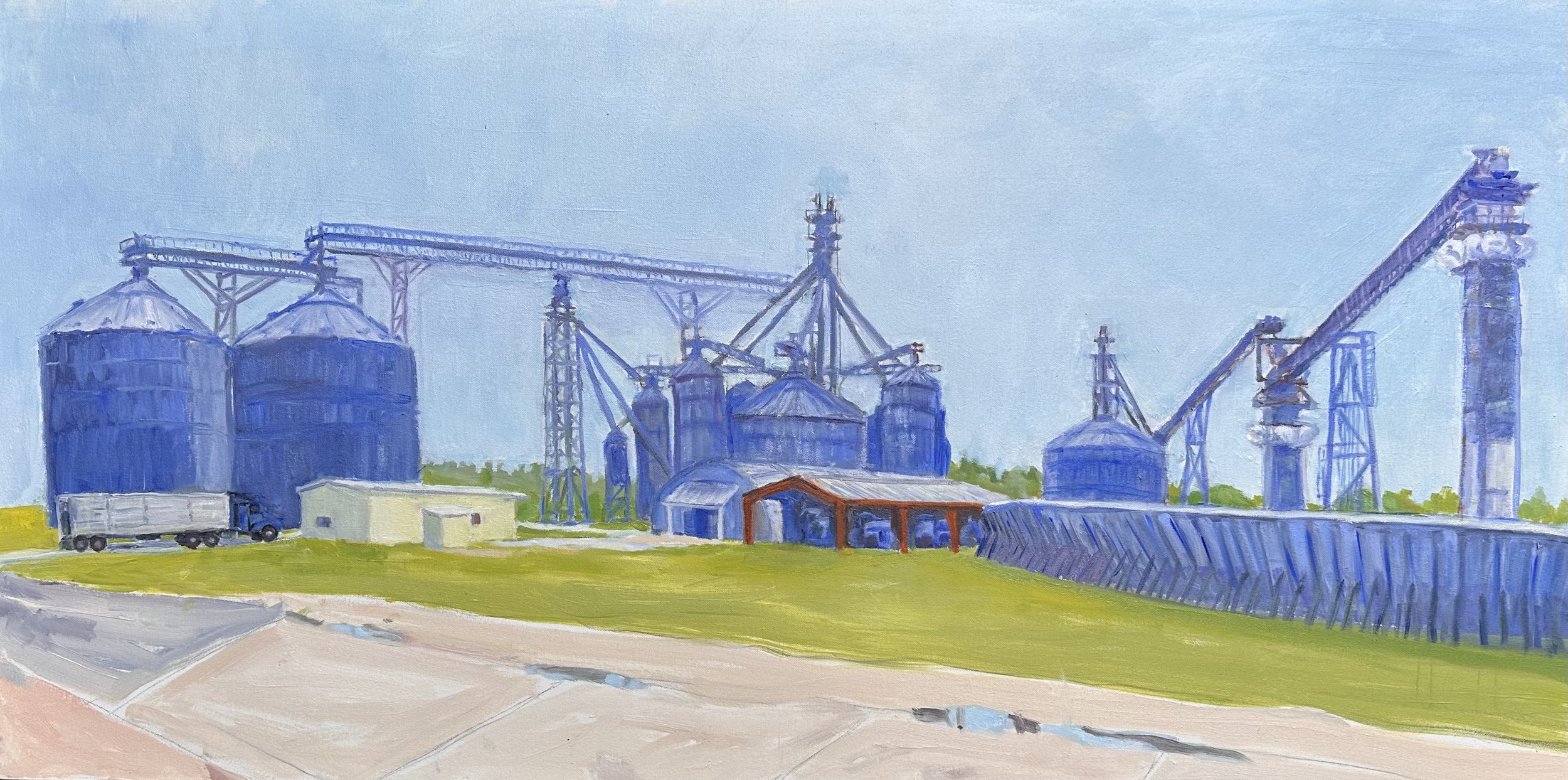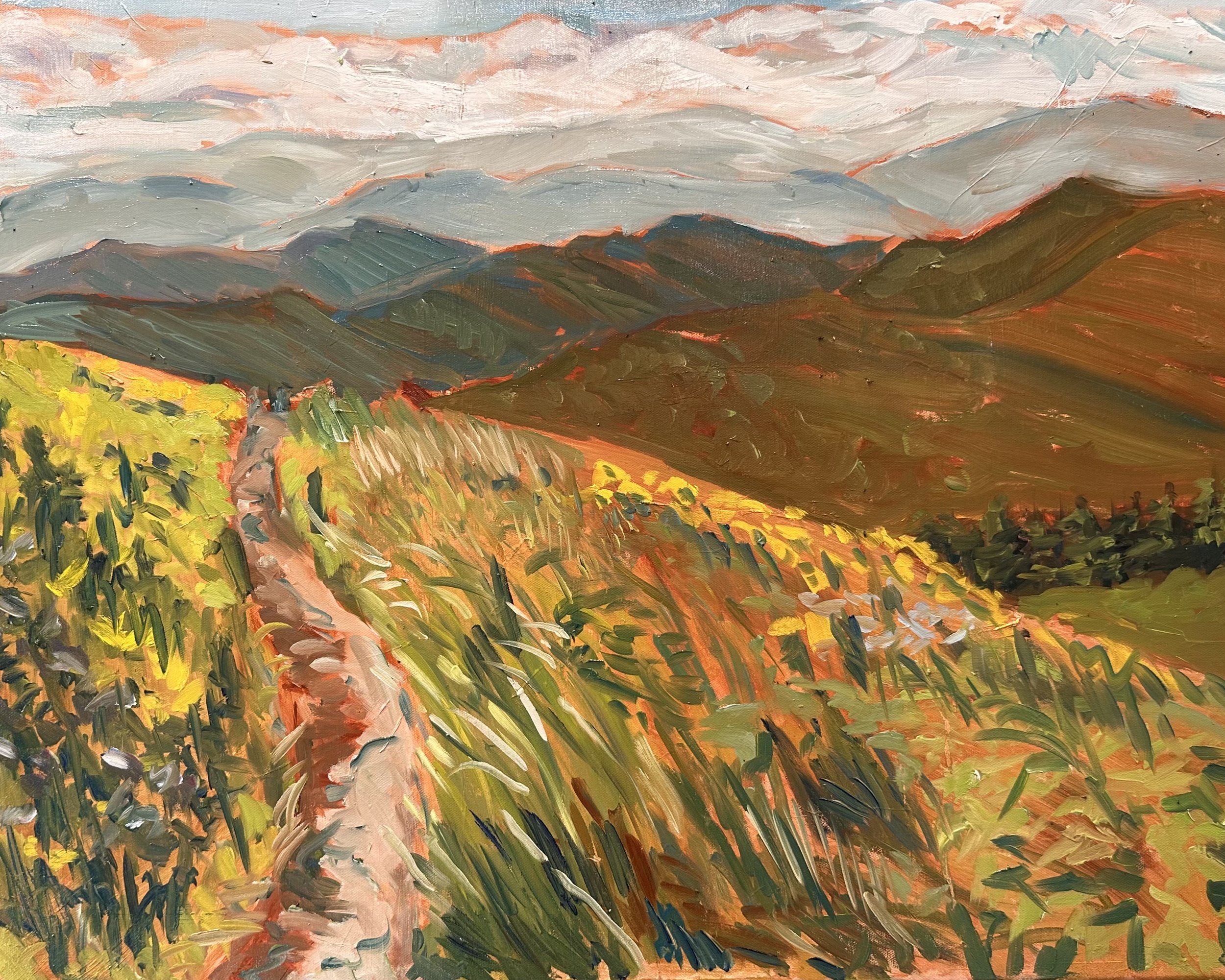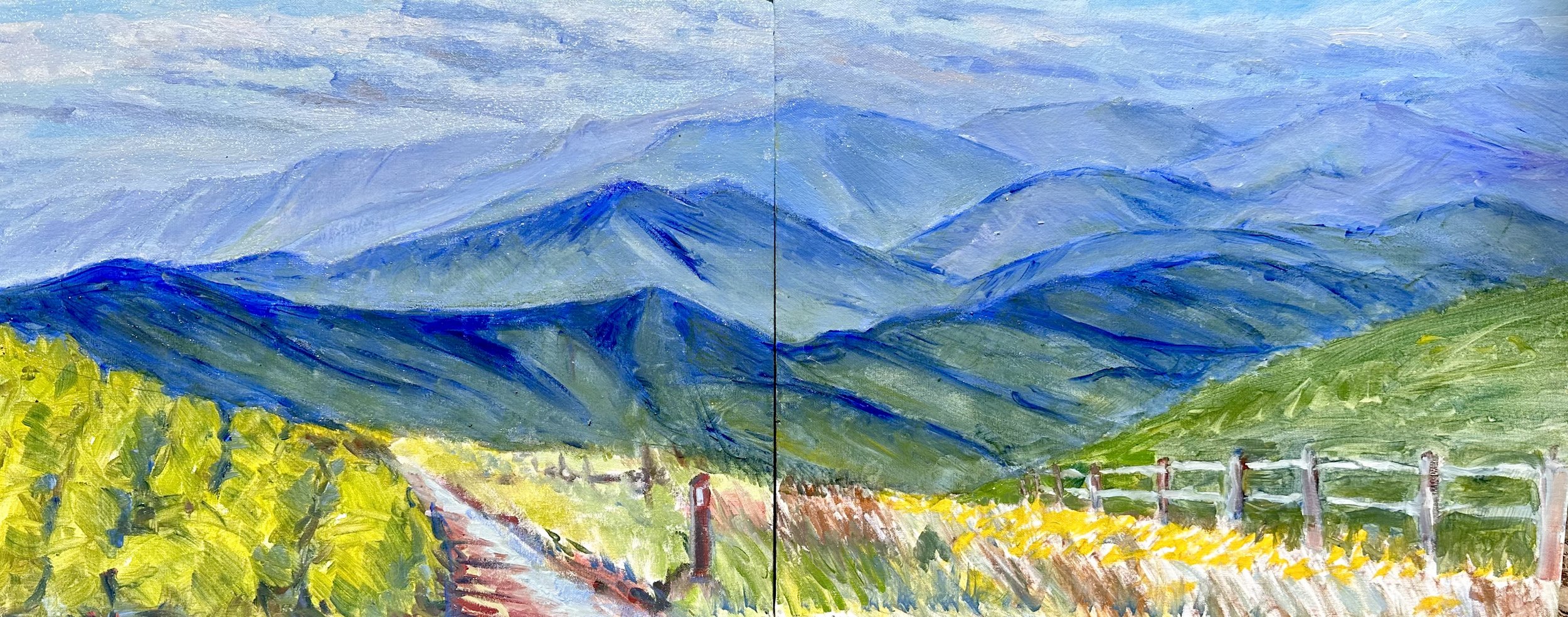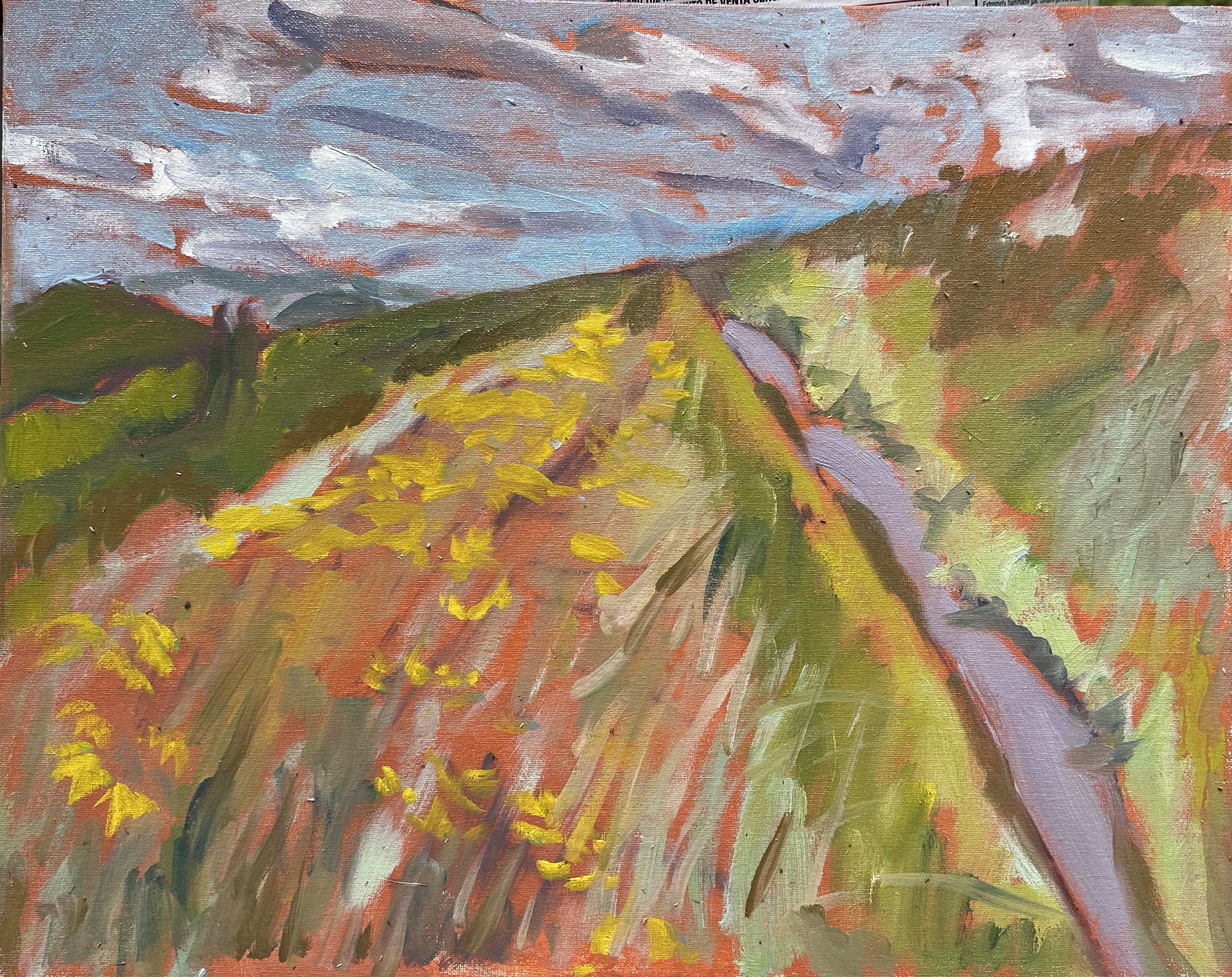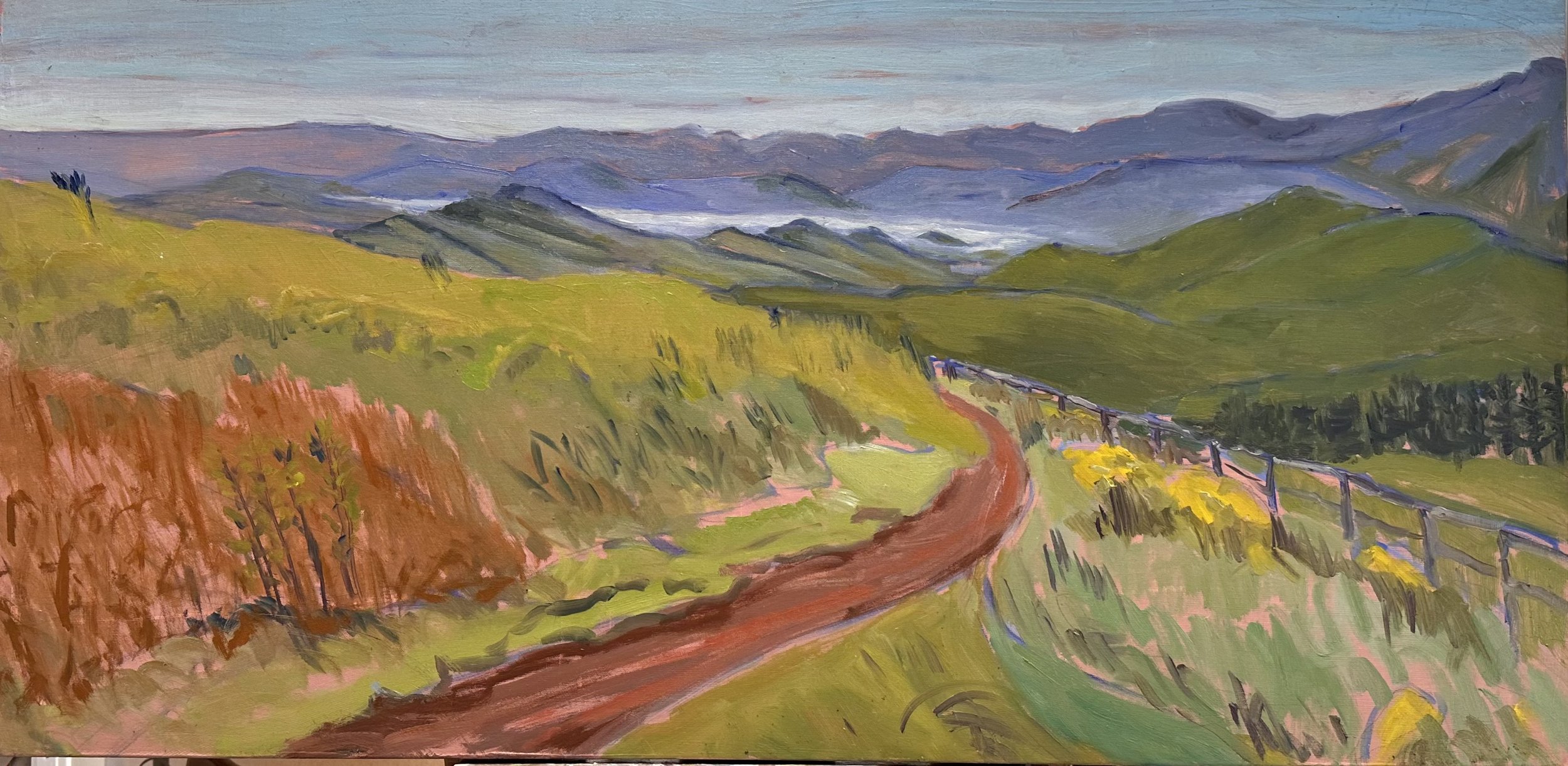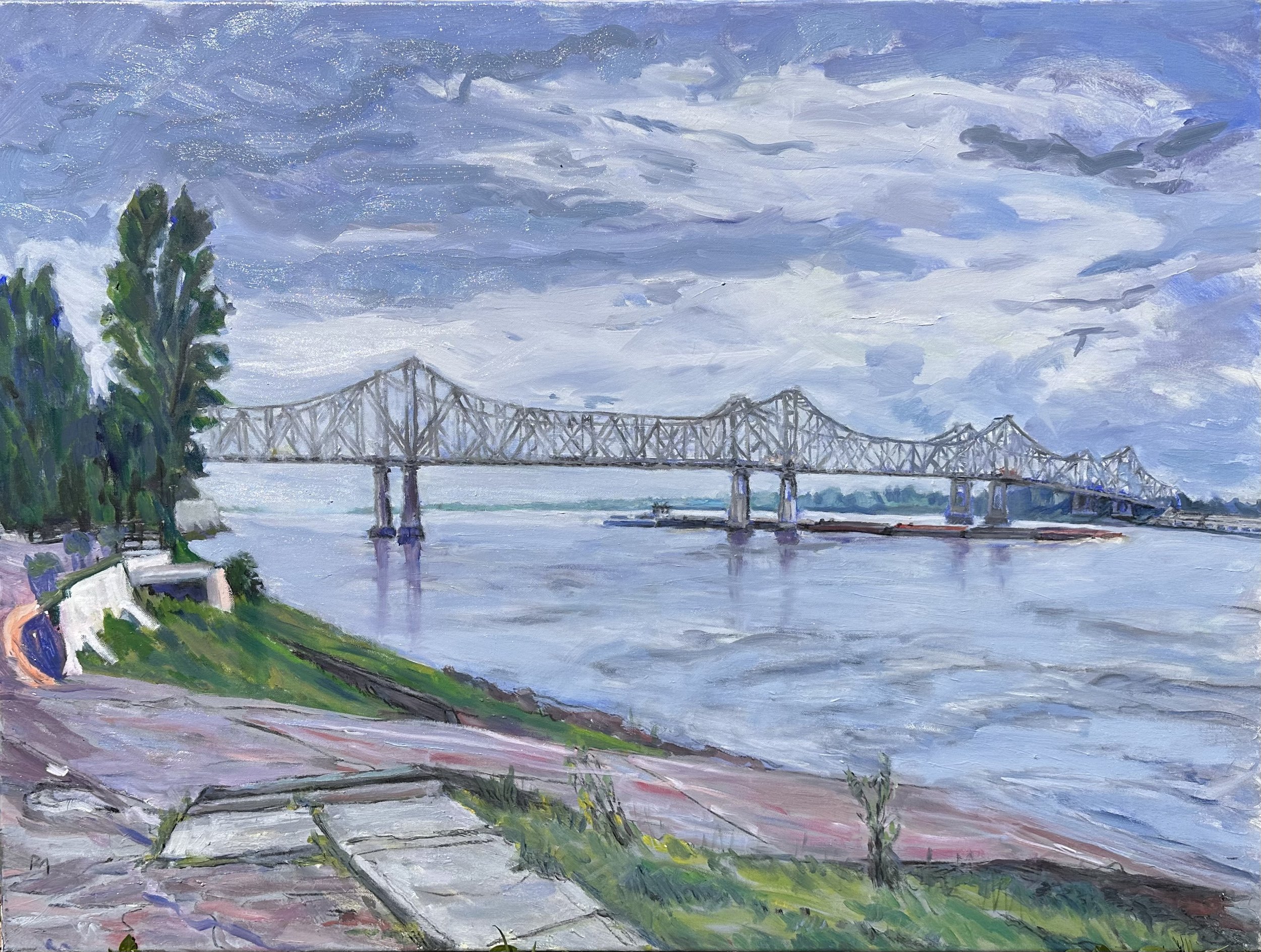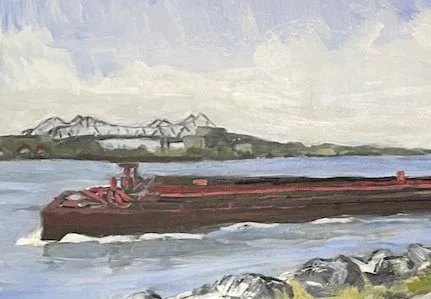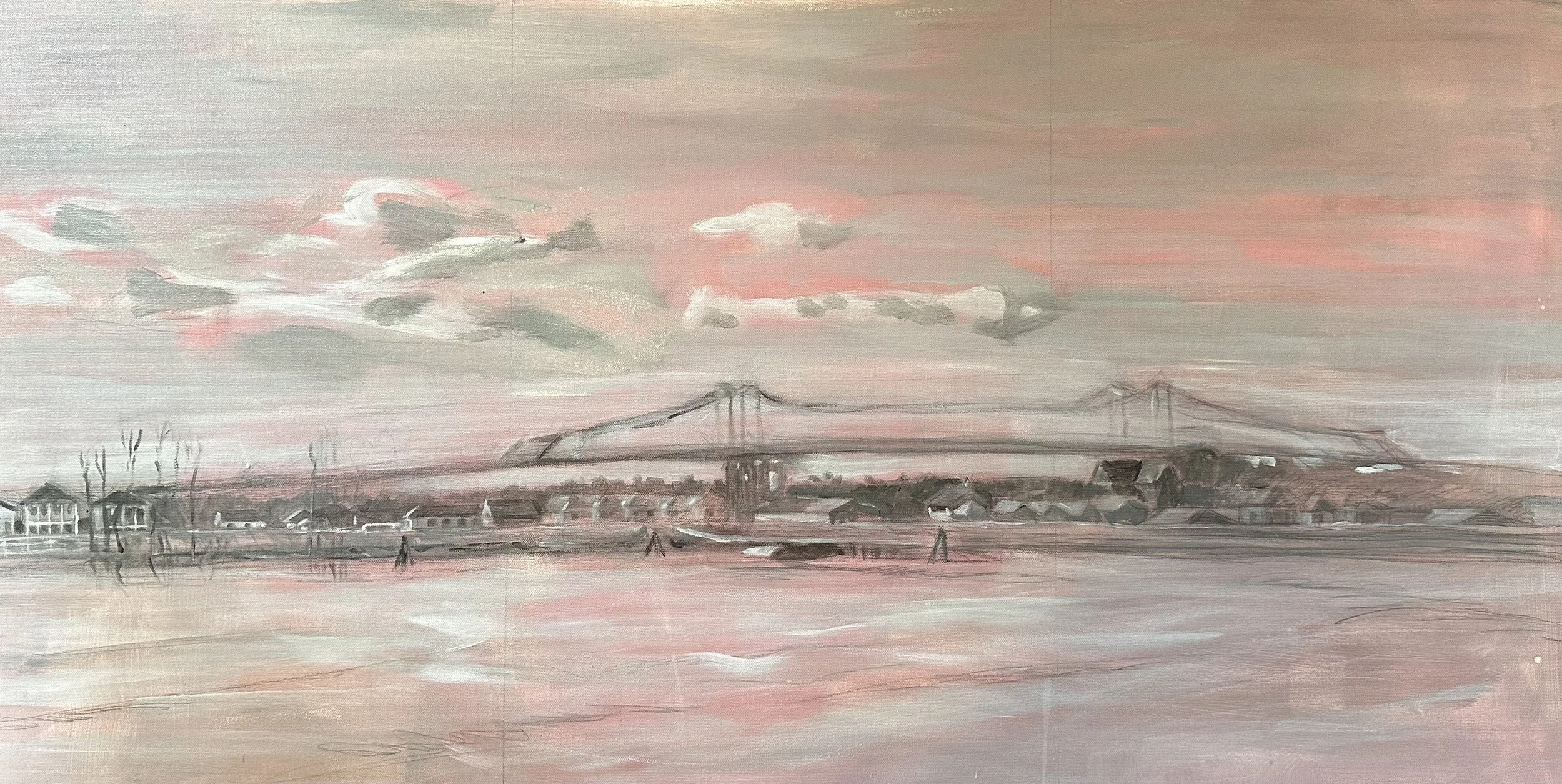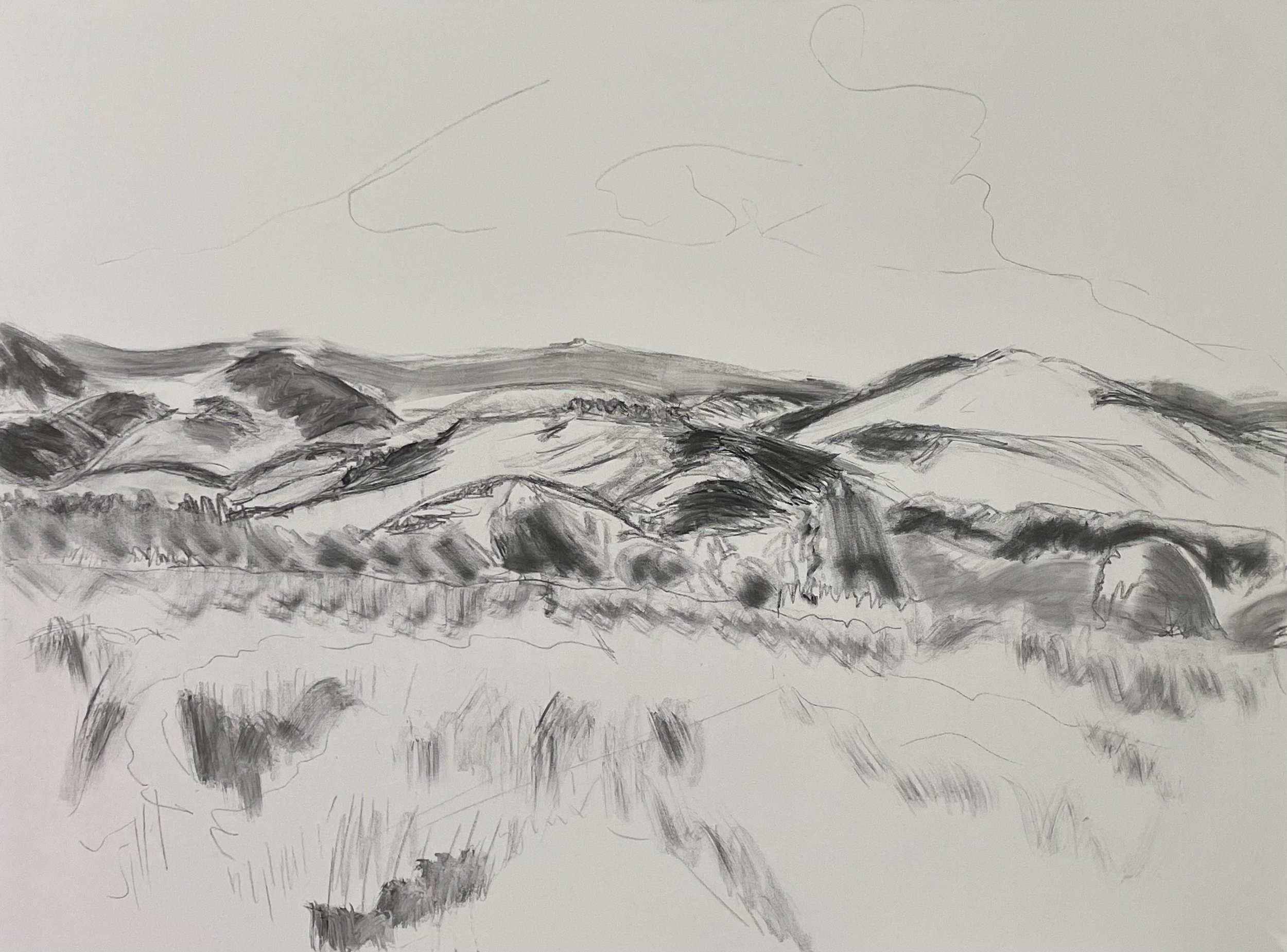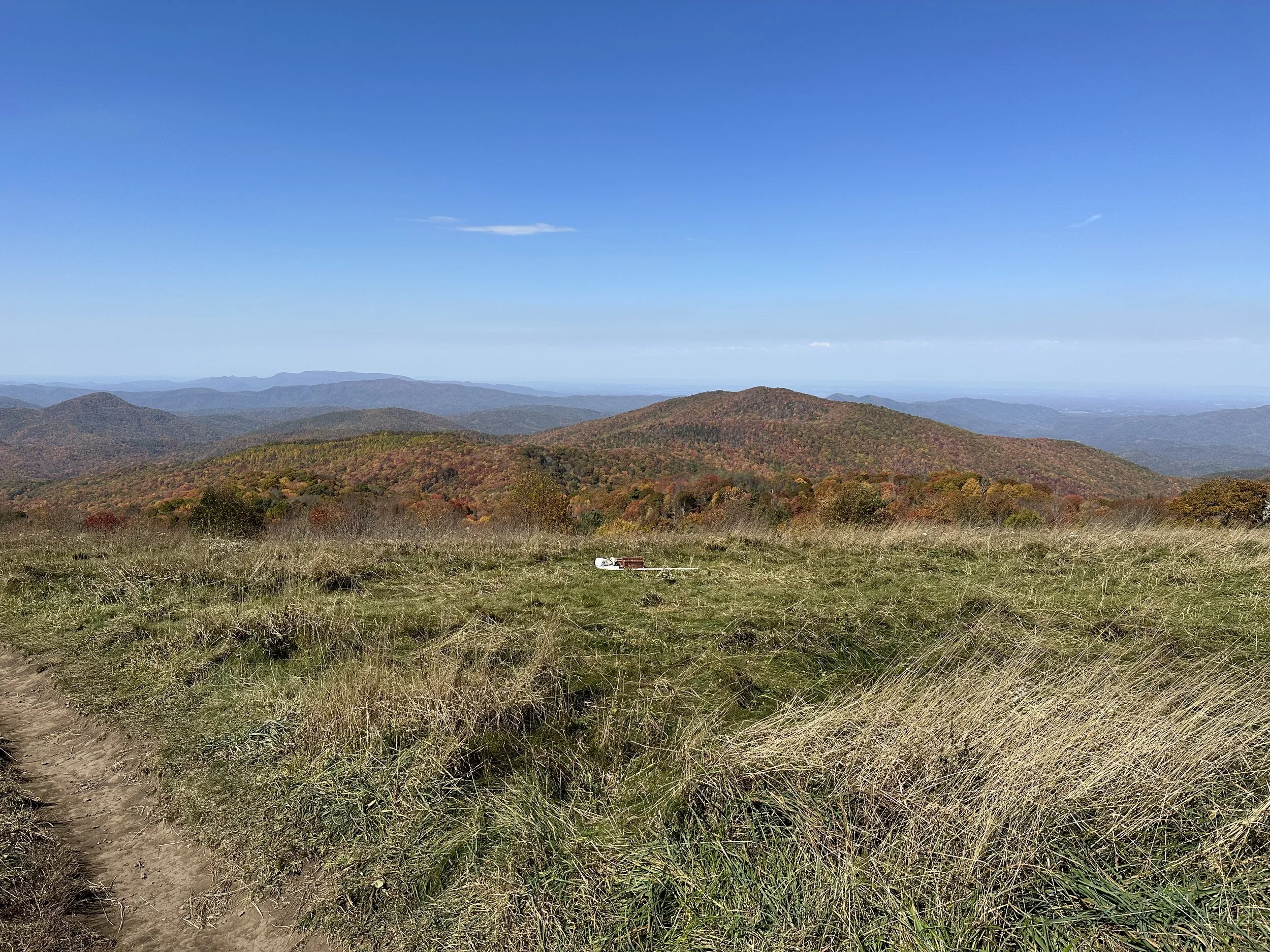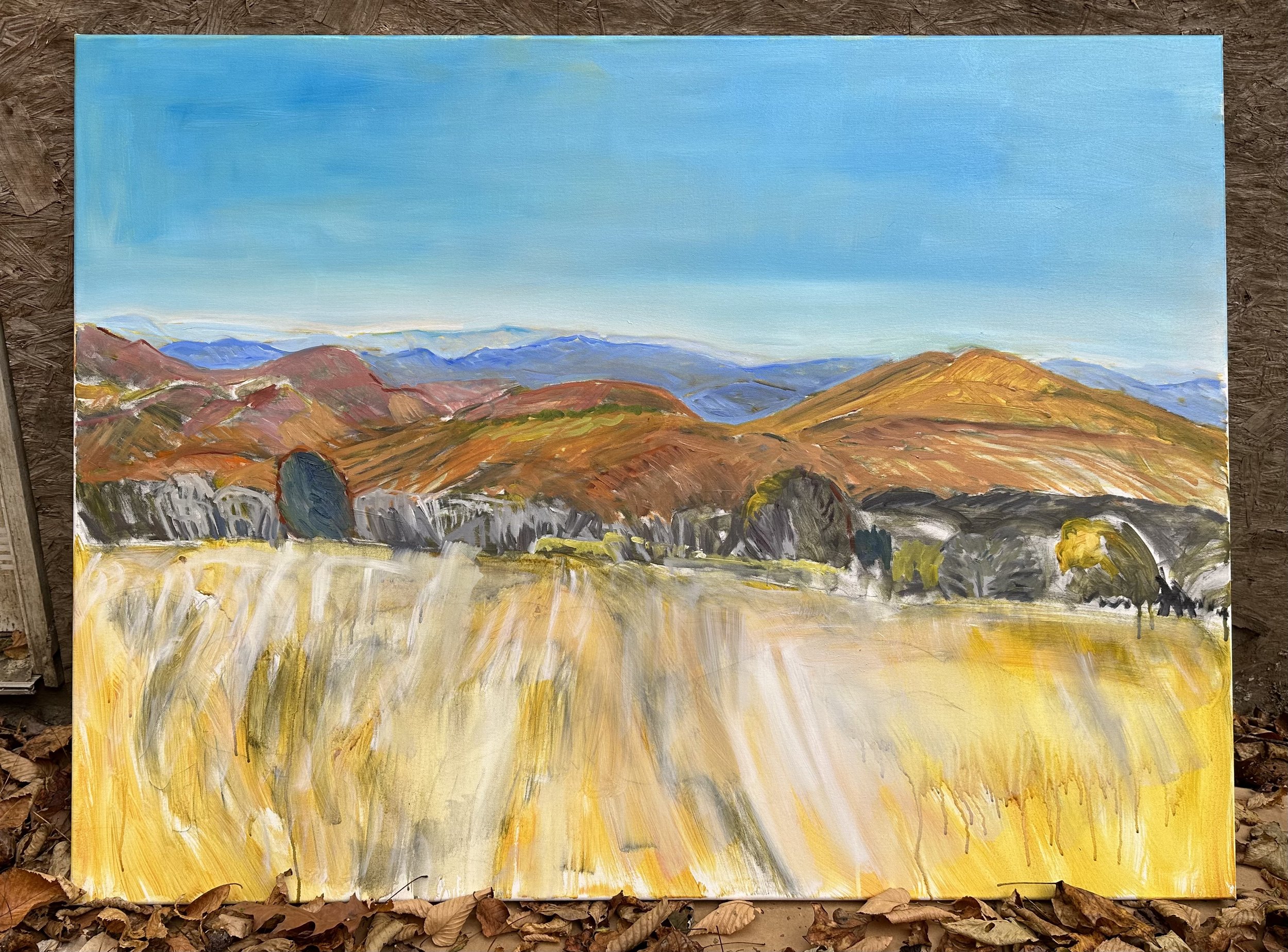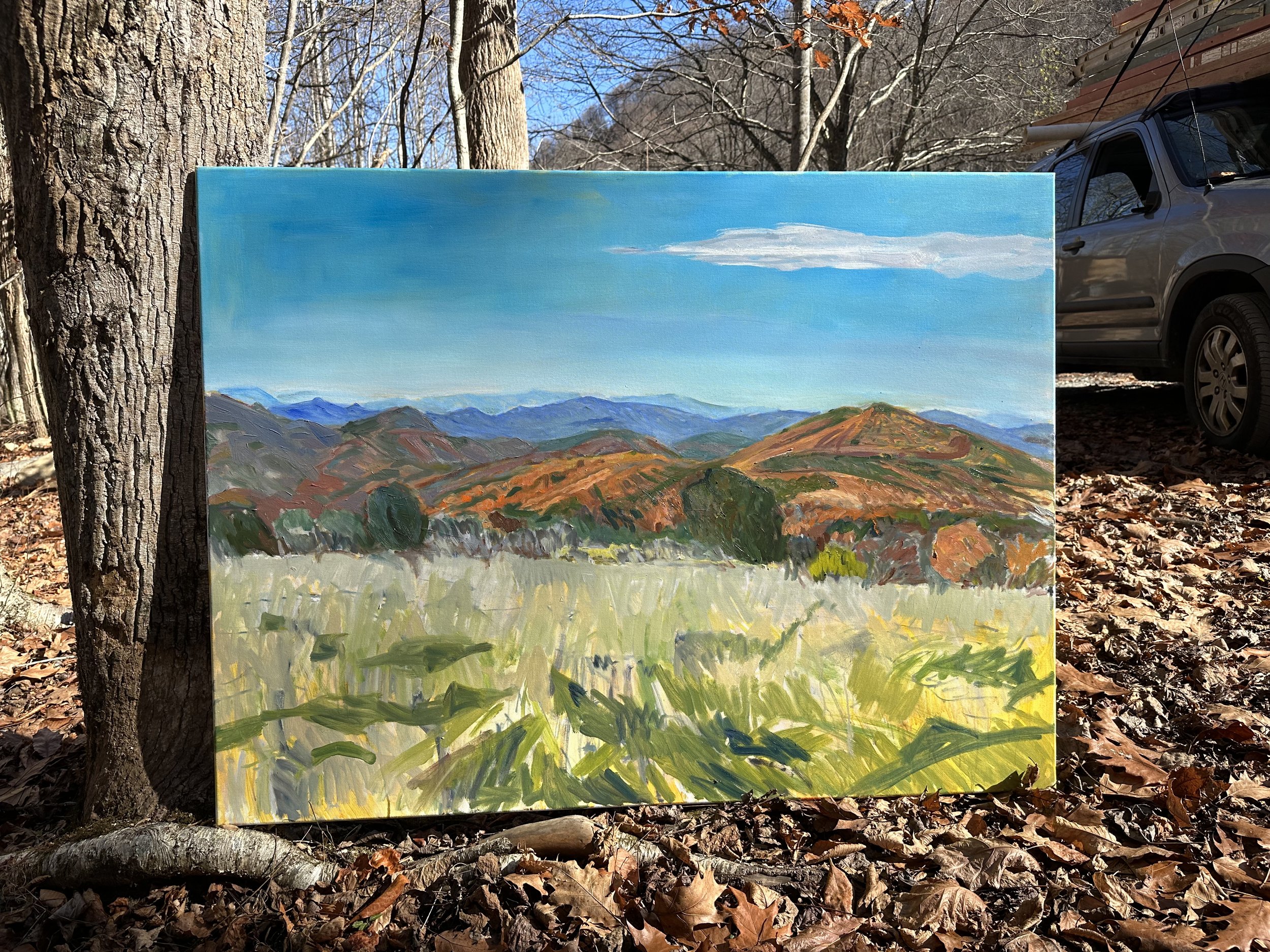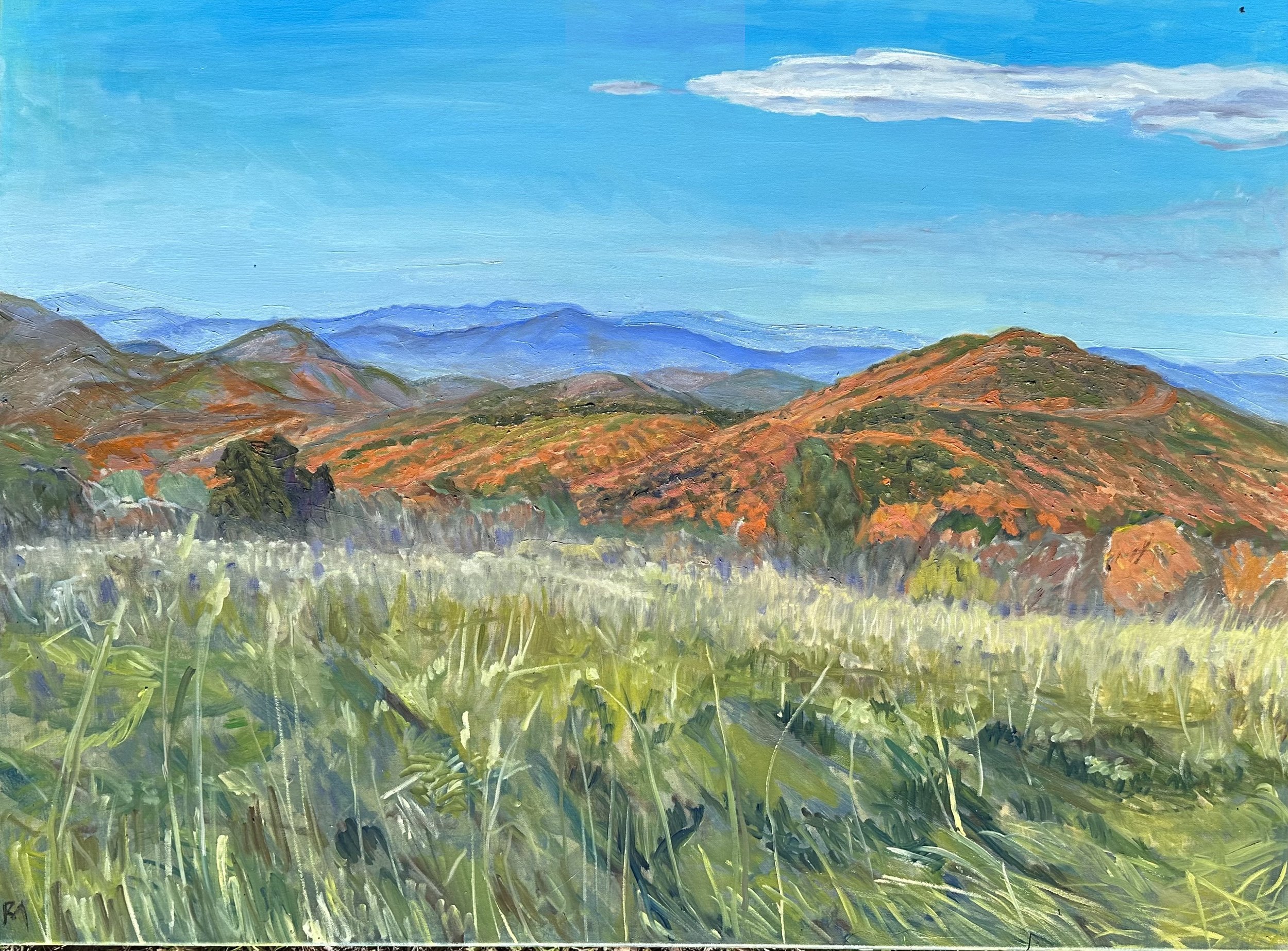Back in February, my good friend John Whelan joined me for a long weekend and we took a painting road trip. We had drawn and painted together since we first met in 1977 in Aix-en-Provence. After Katrina, he generously came down to help me with some repairs to my garage and we visited New Orleans as it was getting back on its feet. He came one more time and we enjoyed ourselves in New Orleans and painted a few scenes on Horn Island. But he had never visited the rest of Mississippi so I took him on a painting trip through the Delta. John and I share an enthusiasm for what he describes tongue-in-cheek as industrial disease. I knew what would be one of our stops, the Farmers Storage Terminal in Belzoni.
Like two peas in a pod, we set up on the roadside in front of this scene. True to the Ashcan School ethic, John pulled up a big rubbish can to use as a shelf. We went after this scene with abandon. This was among the happiest mornings I’ve had recently. Passers-by were struck by not one but two painters at work on this industrial site and that led to some great encounters between the local folks and us. What in hell is going on?
I started this scene in washed-out pencil, thinned it out with turps, and then used purple, yellow, and green in tribute to Mardi Gras. I went very faint and thinned out on the colors. It was such a stretched-out scene that I used two panels side by side. I really enjoyed the foreground in this one. By the time we had to move on, I had a good beginning.
We spent the night in Leland with friends and the next morning on the patio, I added more, leaning into the purple. This was preposterous to me but also perfect. The sky seemed especially in tune with the threatening weather.
In April, I took this with me to Trust and worked on it some more. Here is where it finished up.
The next step was to prepare a single large canvas for a return engagement. In July, I drew it out on a 24 x 48 in the Trust studio and made plans to go back.
To my surprise, when I got there, the large “circus tent” on the right had been retracted, exposing the central poles. At first, I was disappointed and then I began to zero in on the strangeness of these towers with their furled cloth bunched up high. So I went with what was there. I arrived in the early morning and worked with a simple palette. I had listened to Robert Henri’s The Art Spirit on the way over and he talked about making big piles of 4 or 5 colors to start a painting with. So I used a pad of peel-off palette paper to do that. I did extremely pale cerulean blue and zinc white, with hints of yellow for the sky, and ultramarine blue with zinc white for the structures. I was out of my normal tube and had to use an older one that turned out to be very rich and dark - nice!
I used a single green for the middle ground and some red and a dash of yellow, heavily diluted with zinc white for the road. As I worked that out, there were a few small puddles from a recent rain so I put in the reflections. That instantly worked for me. I added a few dark areas in alizarin crimson which later caused me a little heartburn.
I came back one week later and did some additional work. My main goal was to get things in more accurate proportion and to unify the color scheme of the structures. Generally, I left the foreground and middle ground alone. I took this back to Trust with me to work on the details and eliminate the glitches. This was the work of several mornings, but it generally flowed without hitches. Here is how it ended up. I like it as much as the original study, even though they are very different. This one has a tranquil mood in common with the Algiers and recent Max Patch scene.




